
 Image: Brad Chacos/IDG
Image: Brad Chacos/IDG
At a Glance
Expert’s Rating
Pros
Great 1080p, good 1440p, and solid VR gameplayCompelling price to performanceSapphire’s Nitro+ customizations look and work great
Cons
Lags far behind GTX 1060 in power efficiencyBasically a rebrand of the RX 480 with slightly higher clock speeds
Our Verdict
The Radeon RX 580 is basically the Radeon RX 480 with a new name, but that still makes it the best mainstream graphics card around. Sapphire’s custom Nitro+ design is stellar.
Best Prices Today: Radeon RX 580 Nitro+
RetailerPrice
When AMD’s Radeon RX 480 launched just under a year ago, it redefined what was possible with a $200 graphics card, delivering uncompromising 1080p gaming, darn good 1440p performance, and even the ability to play VR games—none of which was ever available in a graphics card that affordable before.
But it wasn’t quite a flawless victory, and not just because Nvidia’s comparable (yet pricier) GeForce GTX 1060 launched shortly after. The Radeon RX 480 suffered from a power-draw controversy that AMD fixed with admirable speed. Stocks of the card were limited for months, which led to inflated pricing and endless anguish in enthusiast forums. The 4GB Radeon RX 480 was hands-down the best “sweet spot” graphics card you could buy, but it had some baggage in Google searches.
Enter the Radeon RX 580, announced today as part of AMD’s mild Radeon RX 500-series refresh.
The Radeon RX 580 release sweeps away all of that controversy—and gives AMD new Radeon 500-series GPUs to sell alongside its new Ryzen 5 processors. But these “new” graphics cards aren’t really new at all, relying on the same underlying graphics processors as the RX 480, but with slightly boosted clock speeds granted by a year of process optimizations. With so little changed, and Nvidia’s GeForce GTX 1060 likewise matured, is AMD’s offering still the mainstream graphics card champion?
Let’s find out.
Meet the Radeon RX 580
Here’s a look at the reference specs for the Radeon RX 580 and RX 570 (which PCWorld also reviewed). Even though the chart says the RX 570 packs 4GB of memory and the RX 580 has 8GB, that’s just AMD’s recommendation. Both cards will be offered in both capacities.
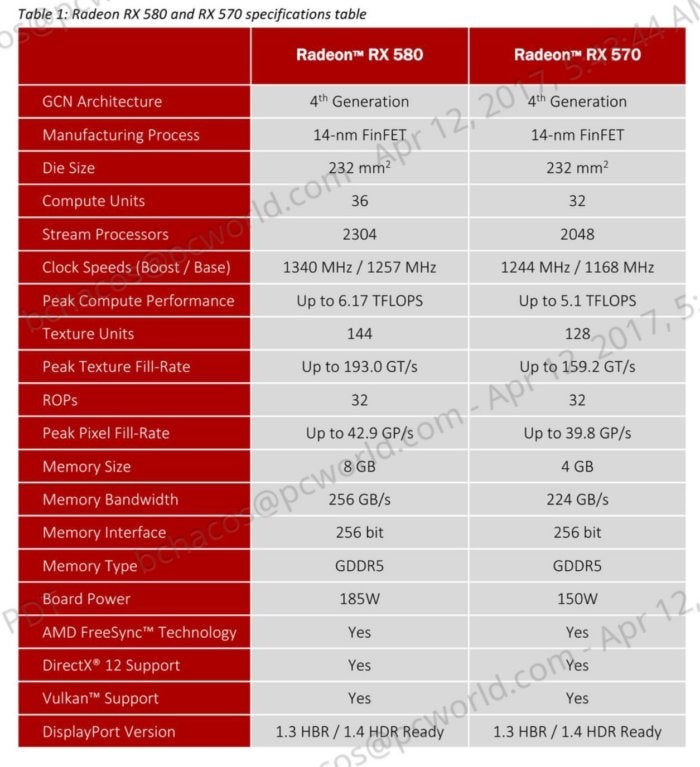 AMD
AMDAMD’s Radeon RX 570 and RX 580 tech specs.
There’s not much difference from the RX 480, honestly. You’ll find minor bumps to peak compute speeds and memory bandwidth, but the only major tweak is the RX 580’s clock speed. AMD’s up to the second generation of optimizations on the Polaris architecture, which let the company bump the speeds up from the RX 480’s 1,120MHz base and 1,266MHz boost clocks to 1,257MHz/1,340MHz on the Radeon RX 580. The Radeon RX 580’s base clock is now effectively the same as the RX 480’s boost clock. Pretty nifty, though there’s unfortunately no bump to memory speeds or capacity.
Cranking clocks requires cranking power, though. The Radeon RX 580 is rated for a 185W TDP, compared to the RX 480’s 150W, so expect the cards to need an 8-pin power supply. AMD’s also allowing board makers to build cards with both an 8-pin and a 6-pin power connectors to push things even further.
 AMD
AMDRadeon Chill now supports League of Legends and Dota 2.
AMD’s offsetting that power increase with the introduction of a new power state that reduces energy usage when you’re idle, using multiple monitors, or watching videos. The company’s also stressing the tremendous power- and temperature-savings of Radeon Chill, a wonderful feature introduced in Radeon Crimson ReLive. Chill’s disabled by default, though, and only compatible with 19 games—though they’re 19 of the most-played games around, and coinciding with the Radeon RX 500-series reveal, AMD also announced that Dota 2 and League of Legends now work with Chill.
The company won’t release a reference version of the Radeon RX 580 though. Instead, all of the cards that hit the streets—today—will be customized models by AMD hardware partners like Sapphire, XFX, PowerColor, et cetera.
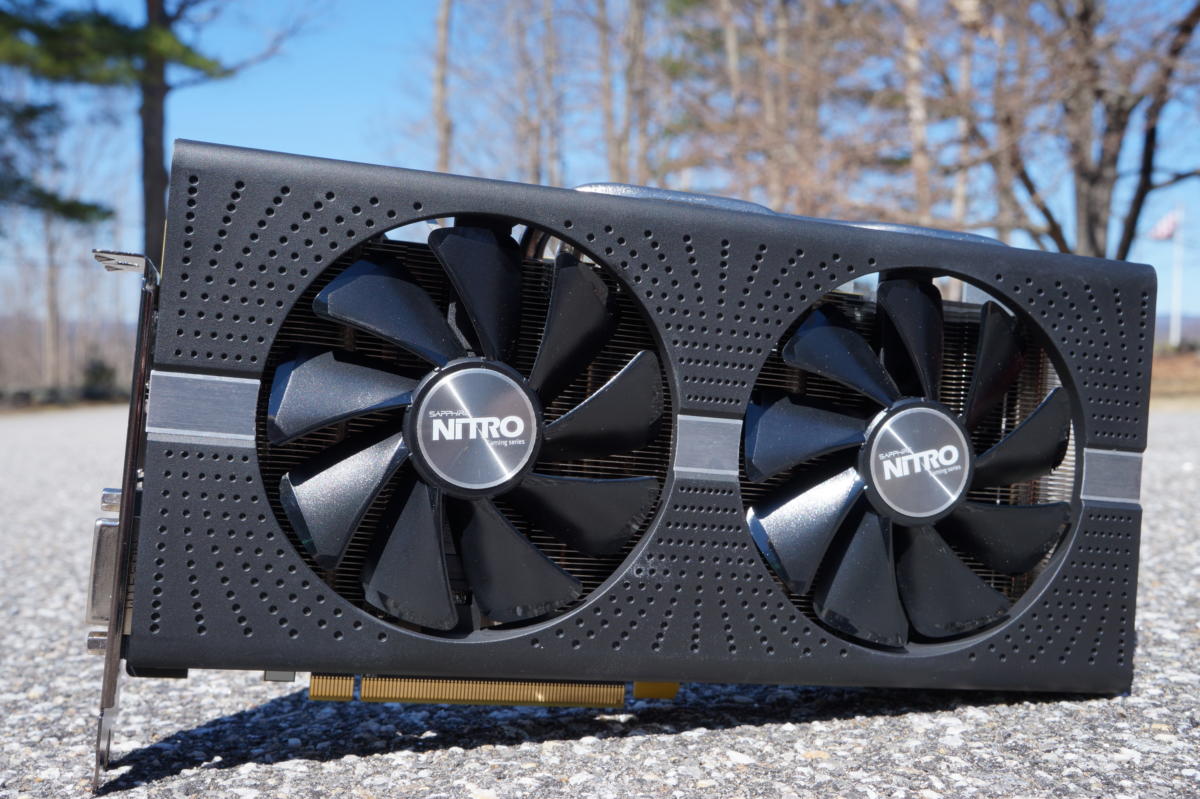 Brad Chacos/IDG
Brad Chacos/IDGThe Sapphire Radeon RX 580 Nitro+.
Speaking of which, the card we’re reviewing today is the 8GB Sapphire RX 580 Nitro+ ($250 on Newegg), which cranks clock speeds all the way up to 1,411MHz, or 69MHz faster than Sapphire’s older RX 480 Nitro+.
But it can go even further! While the older card relied on a single 8-pin power connector, the Sapphire RX 580 Nitro+ adds an optional 6-pin connector to the mix, so the board can provide plenty of juice if you wind up winning the silicon lottery with a GPU that overclocks like a champ. That’s augmented by Sapphire’s black diamond chokes, which filter and clean up the card’s electrical signals.
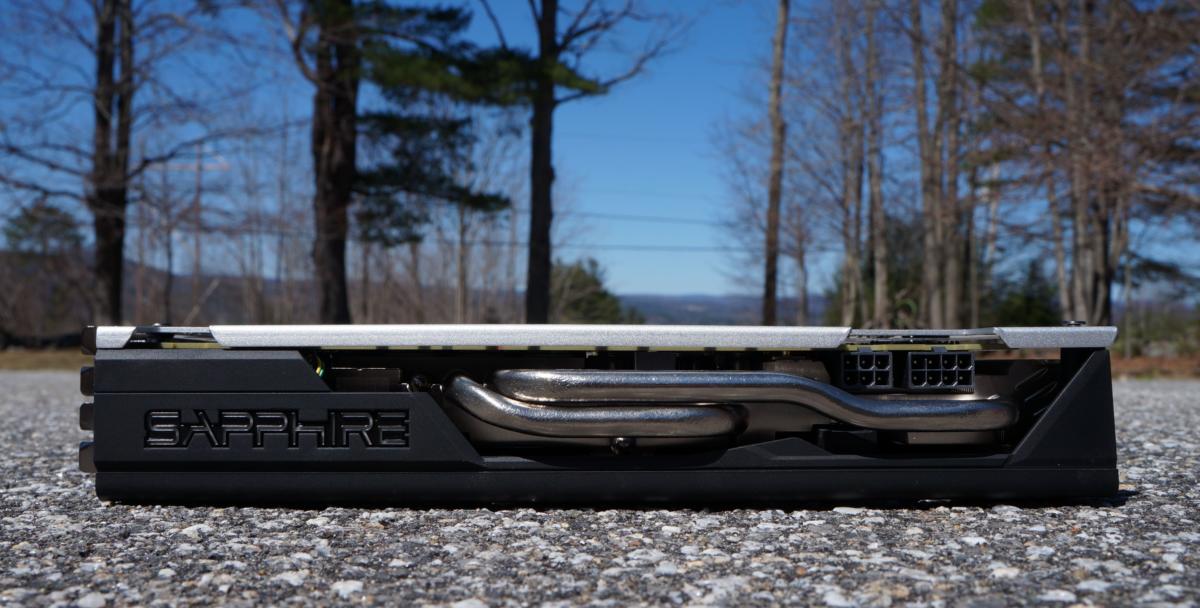 Brad Chacos/IDG
Brad Chacos/IDGSapphire’s RX 580 needs two power connections.
The Sapphire RX 580 Nitro+ maintains a tweaked version of the superb Dual-X cooling system from its predecessor. That’s fine by us. Dual-X’s dual fans and heat pipe-infused heat sink work well—as you’ll see in the temperatures section—and Sapphire has re-engineered the cooler’s design to run much quieter than before. Plus, the look of Sapphire’s card remains stunning.
While many modern graphics cards rock bright colors, angular designs, and RGB everything that cater to the edgy so-called “gamer” aesthetic, the RX 580 Nitro+ sticks to sleek silver-and-black simplicity that looks great in our GPU testing system. The Sapphire logo on the side still lights up, but in a tasteful blue hue by default (you can manually change the color with Sapphire’s Trixx utility). The perforated black shroud looks elegant despite being hard plastic, especially paired with the Nitro+’s gorgeous (and redesigned) metal backplate.
 Brad Chacos/IDG
Brad Chacos/IDGThat’s one pretty backplate.
The Sapphire RX 580 Nitro+’s fans won’t start spinning until you toss a decently heavy graphics load at your PC. They’re also held in by a single screw for easy replacement in case of failure—no need to send your entire GPU back. Sapphire’s aforementioned Trixx software even includes a Fan Health feature that, uh, checks the health of your fans and can connect you with Sapphire support if one craps out.
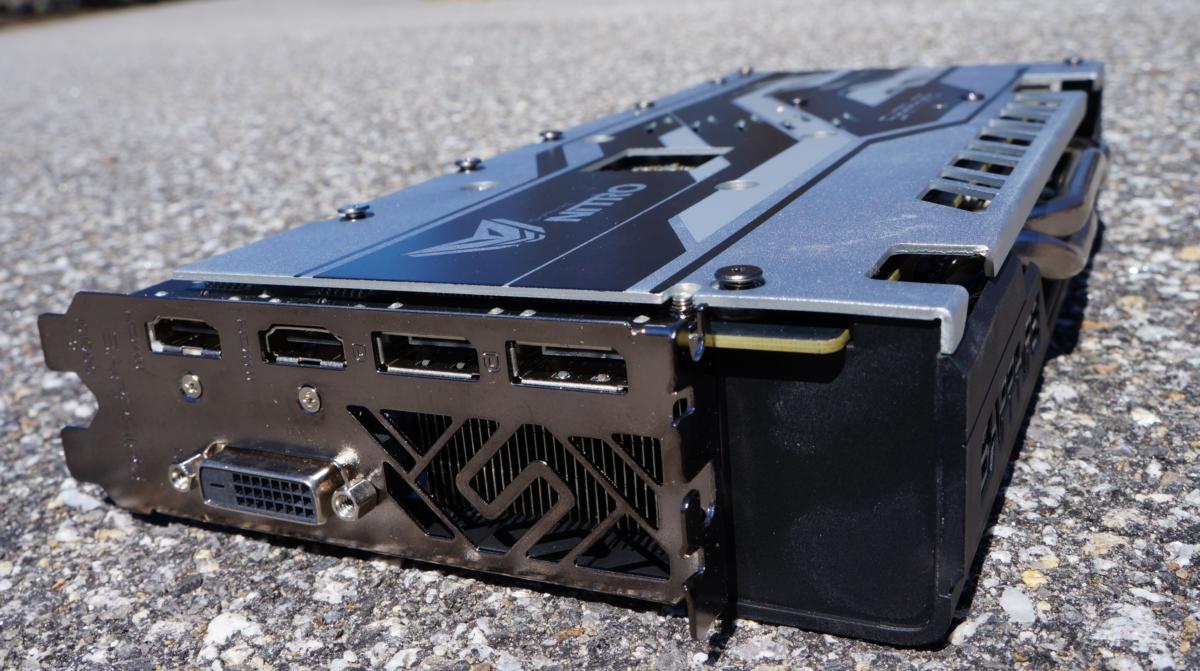 Brad Chacos/IDG
Brad Chacos/IDGFinally, the Nitro+ includes dual DisplayPorts, two HDMI 2.0 connections, and DVI-D. The DVI port will be a blessing for folks with older monitors, while the pair of HDMI ports should come in handy for early virtual-reality adopters, as the Oculus Rift and HTC Vive each utilize an HDMI connection.
Enough talk. Let’s benchmark!
Next page: Test system configuration, benchmarks begin
Our test system/Division results
We tested Sapphire’s Radeon RX 580 Nitro+ on PCWorld’s dedicated graphics card benchmark system. Our testbed’s loaded with high-end components to avoid bottlenecks in other parts of the system and show unfettered graphics performance.
Intel’s Core i7-5960X with a Corsair Hydro Series H100i closed-loop water cooler ($120 on Amazon).An Asus X99 Deluxe motherboard ($230 on Amazon for an updated version).Corsair’s Vengeance LPX DDR4 memory ($130 on Amazon), and 1,200-watt AX1200i power supply ($310 on Amazon).A 480GB Intel 730 series SSD ($280 on Amazon).Phanteks’ Enthoo Evolv ATX case ($190 on Amazon).Windows 10 Pro ($158 on Amazon).
Mentioned in this article
GeForce GTX 1060 (3GB)
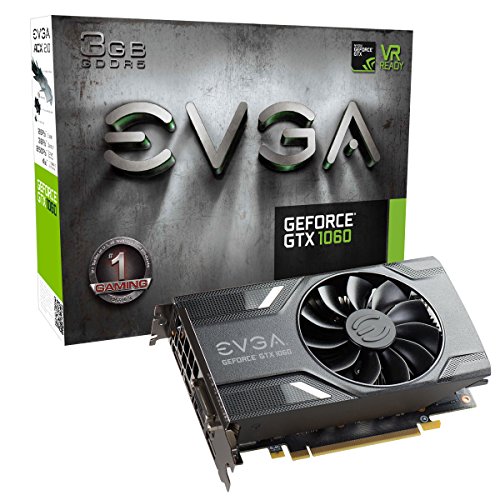 Read our reviewPrice When Reviewed:$199.99Best Prices Today:$459 at Walmart
Read our reviewPrice When Reviewed:$199.99Best Prices Today:$459 at Walmart
We’re comparing the $250 Sapphire Radeon RX 580 Nitro+ against its natural competitors. Since this is an overclocked model, it’ll go up against an overclocked RX 480—MSI’s ferocious 8GB Gaming X, specifically. We also tested EVGA’s overclocked 6GB GeForce GTX 1060 SSC ($250 on Amazon) and stock-clocked 3GB GeForce GTX 1060 ($190 on Amazon), as well as Gigabyte’s overclocked $180 Aorus RX 570 to show how the RX 580’s little brother holds up.
AMD’s marketing materials compare the RX 580 to the older R9 380 and GTX 970, pushing the “upgrade with Ryzen” angle, but we’re not going to do that here. Frankly, the RX 480 already outpunched those cards, as covered in PCWorld’s year-old RX 480 review—especially the older Radeon.
Each game’s tested using its in-game benchmark at the mentioned graphics presets, with V-sync, frame-rate caps, and all GPU vendor-specific technologies—like AMD TressFX, Nvidia GameWorks options, and FreeSync/G-Sync—disabled.
The Division
The Division, a gorgeous third-person shooter/RPG that mixes elements of Destiny and Gears of War, kicks things off with Ubisoft’s new Snowdrop engine. We test the game in DirectX 11 mode; The Division recently rolled out an update that adds DirectX 12 support, but the performance is virtually identical to the DX11 results.
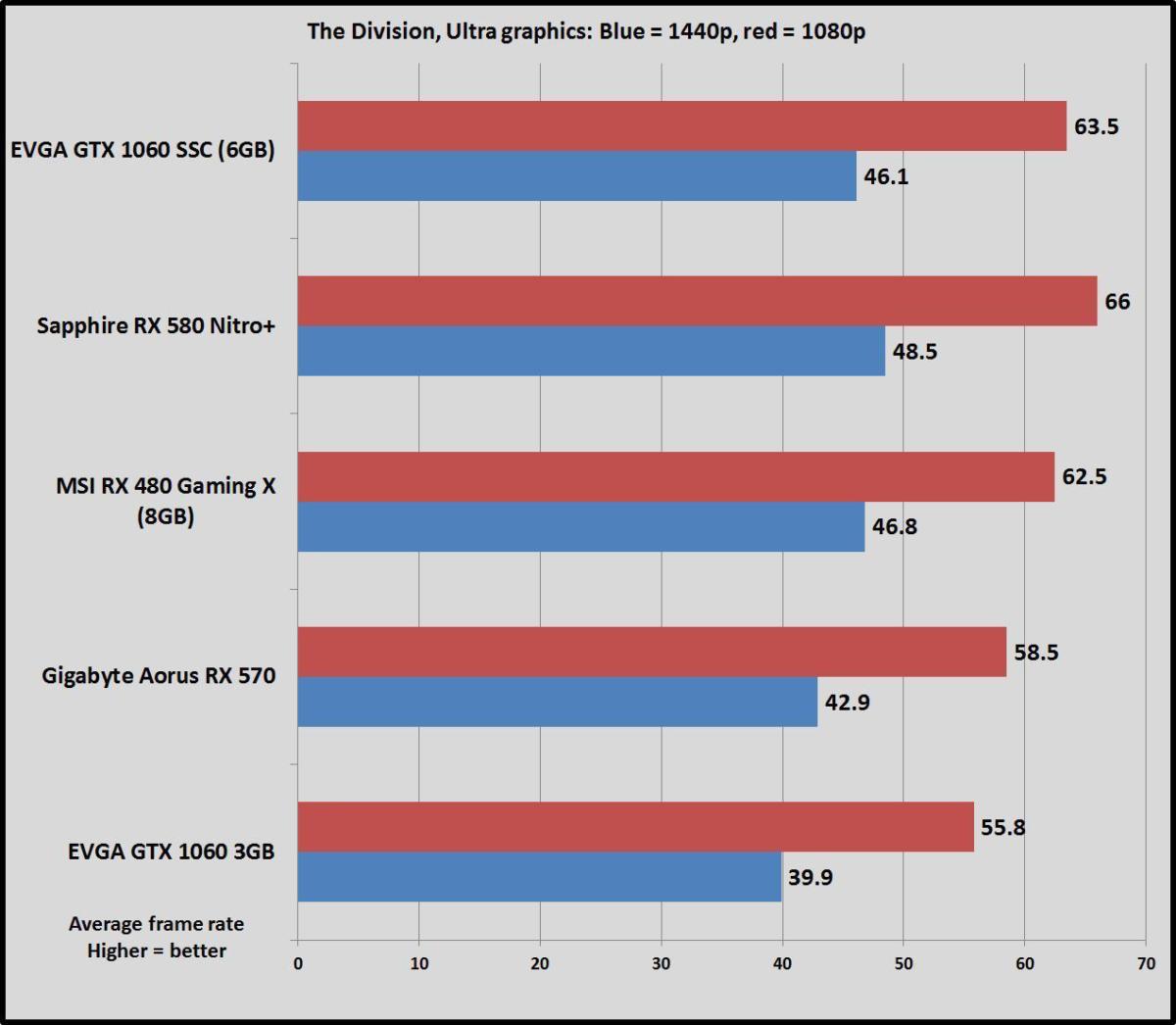 Brad Chacos/IDG
Brad Chacos/IDGThe overclocked EVGA GTX 1060 and MSI RX 480 cards deliver virtually identical performance here. The Sapphire RX 580 Nitro’s bolstered clock speeds eke out a few extra frames but it’s a pretty minor increase. The roughly 13 percent lead the RX 580 maintains over the RX 570 is enough to firmly push it past 60fps at 1080p, and deliver a noticeably smoother 1440p experience. There’s a big difference between frame rates in the lower- and upper-40s.
Next page: Hitman
Hitman
Hitman’s Glacier engine historically favored AMD hardware. It’s no surprise; Hitman’s a flagship AMD Gaming Evolved title. That said, GeForce cards certainly don’t slouch after recent driver optimizations. We test in both DirectX 11 and DirectX 12 with SSAO disabled.
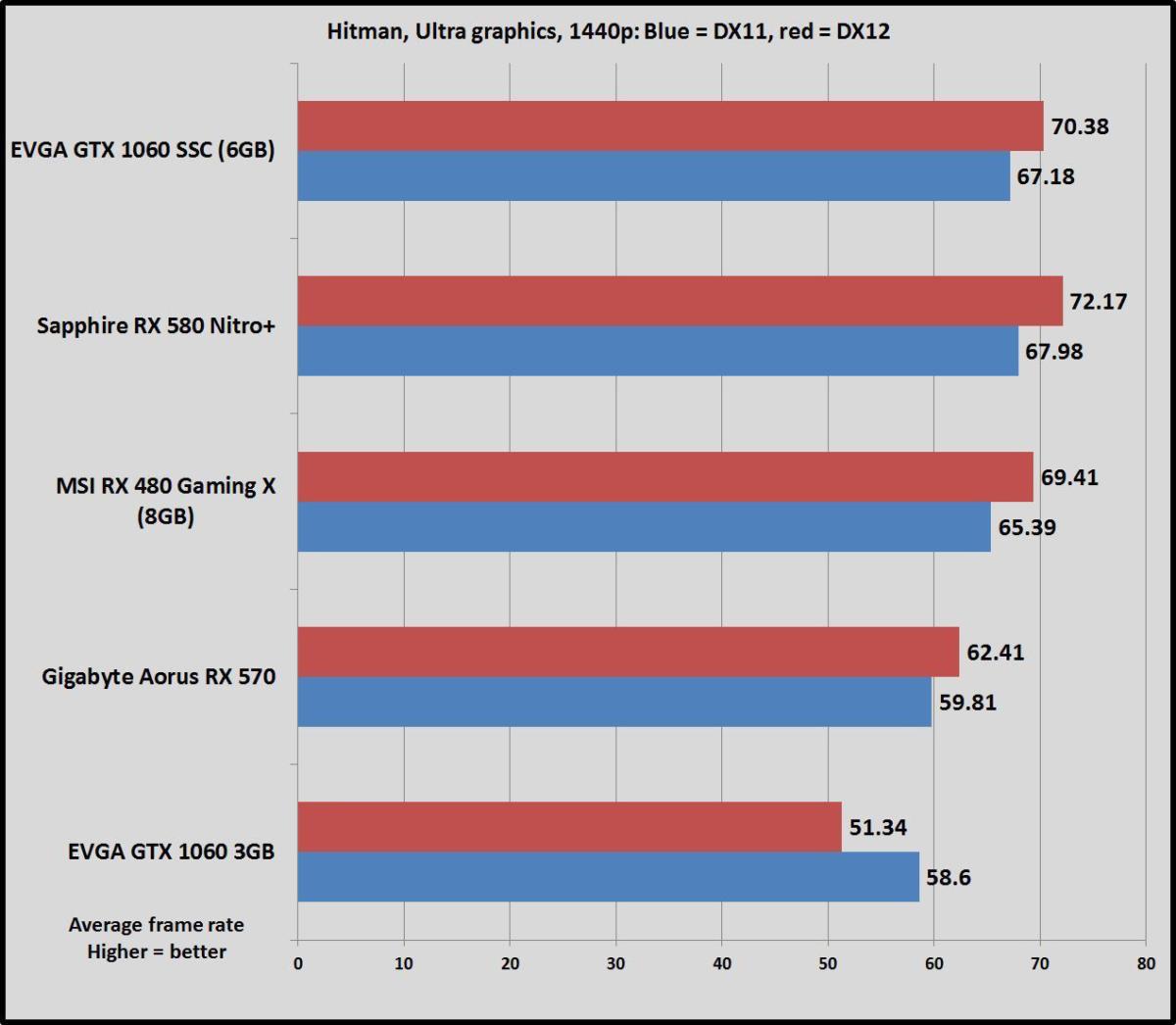 Brad Chacos/IDG
Brad Chacos/IDG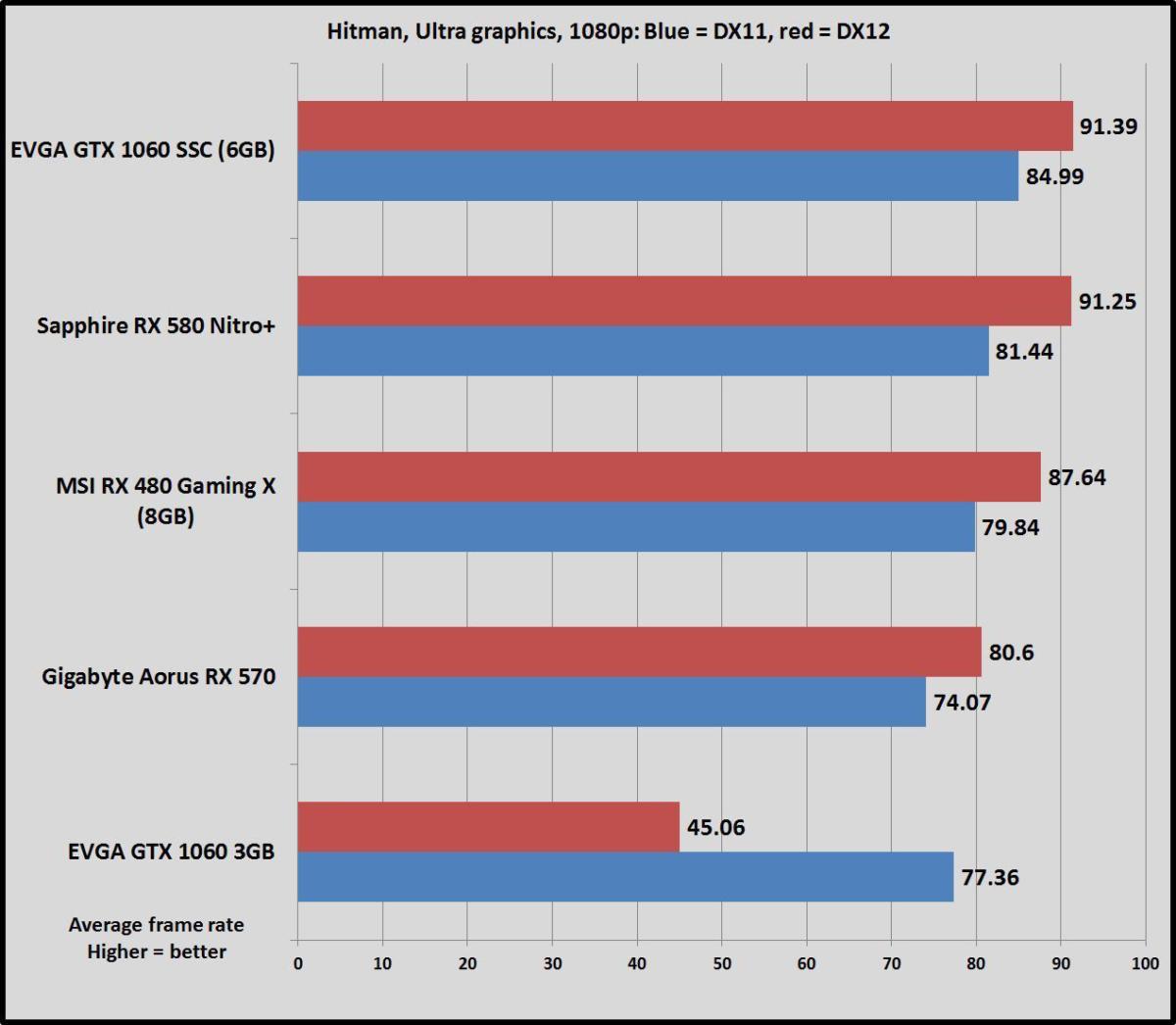 Brad Chacos/IDG
Brad Chacos/IDGThe Radeon RX 580 Nitro+ again delivers a mere few frames-per-second increase compared to its predecessor, and a sizable lead over the RX 570, though it draws fairly even with the overclocked 6GB GTX 1060.
Aside from the RX 580’s paltry performance uptick, the most noticeable thing here is the 3GB GTX 1060’s DirectX 12 performance. DX12 tends to hit memory pretty hard, and it shows in cards with less than 4GB of RAM. EVGA’s 3GB card stutters heavily when you flip the DX12 switch, which in turn drags down its overall frame rate.
Next page: Rise of the Tomb Raider
Rise of the Tomb Raider
Whereas Hitman adores Radeon GPUs, Rise of the Tomb Raider performs much better on GeForce cards—and it’s absolutely gorgeous. We only test the game’s DirectX 11 mode, as DX12 results can be erratic.
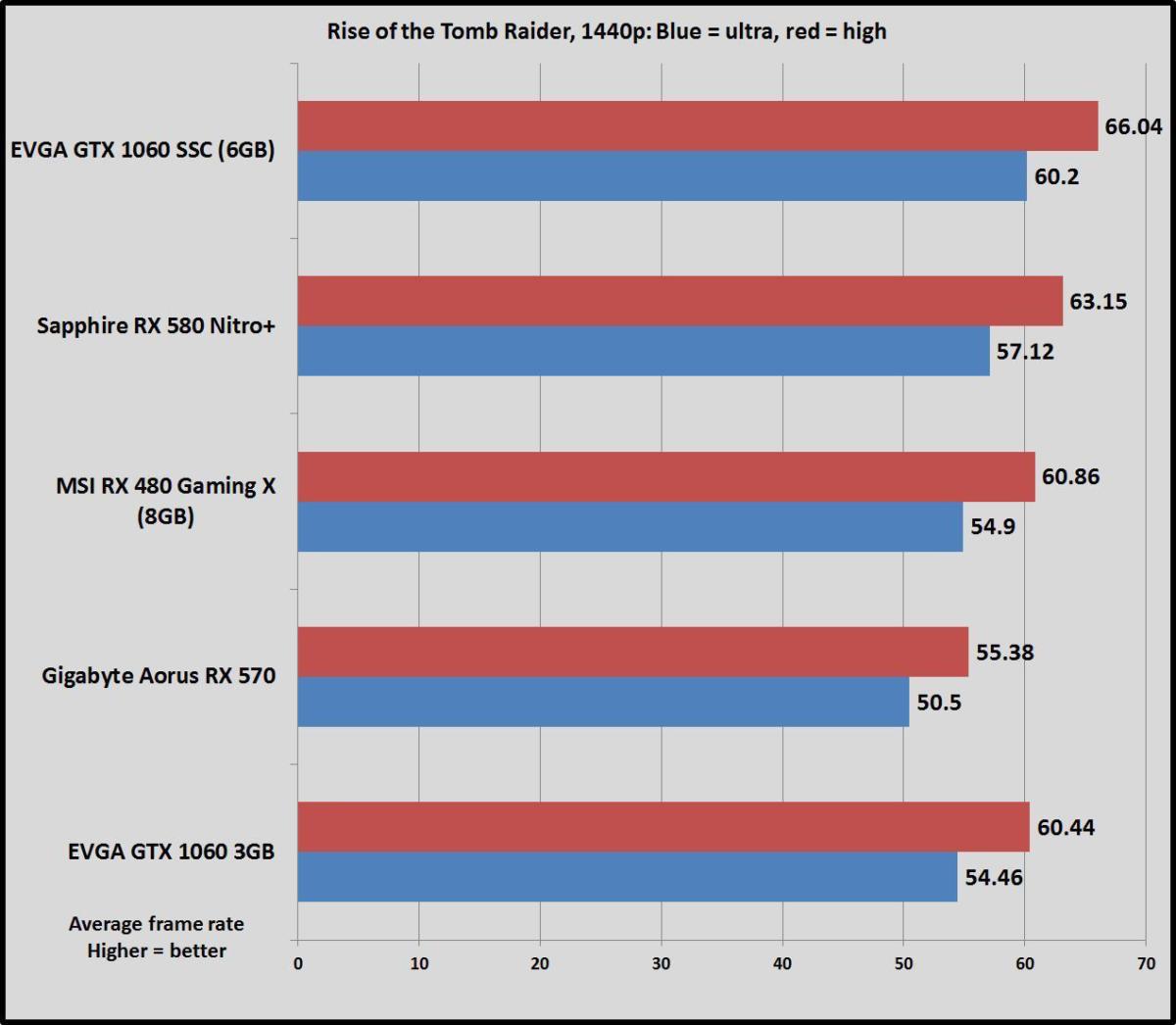 Brad Chacos/IDG
Brad Chacos/IDG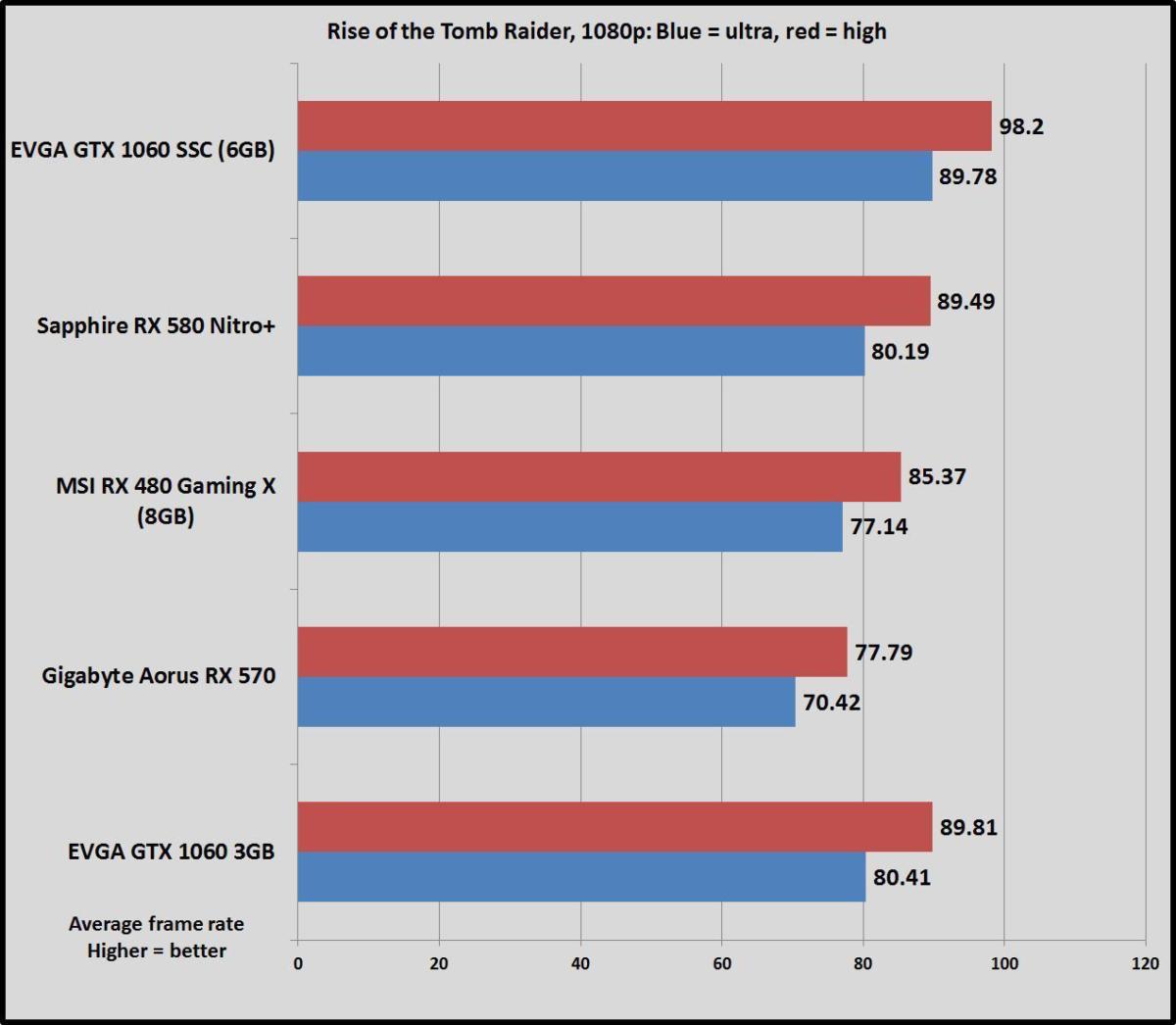 Brad Chacos/IDG
Brad Chacos/IDGThe Sapphire RX 580 Nitro+’s extra oomph helps it close the gap on Nvidia’s contender here, especially at 1440p resolution, which flirts with the 60fps gold standard—unlike the Aorus RX 570. The gulf widens at 1080p but that’s to be expected with this game.
Next page: Far Cry Primal
Far Cry Primal
Far Cry Primal is another Ubisoft game, but it’s powered by a different engine than The Division—the latest version of the respected Dunia engine.
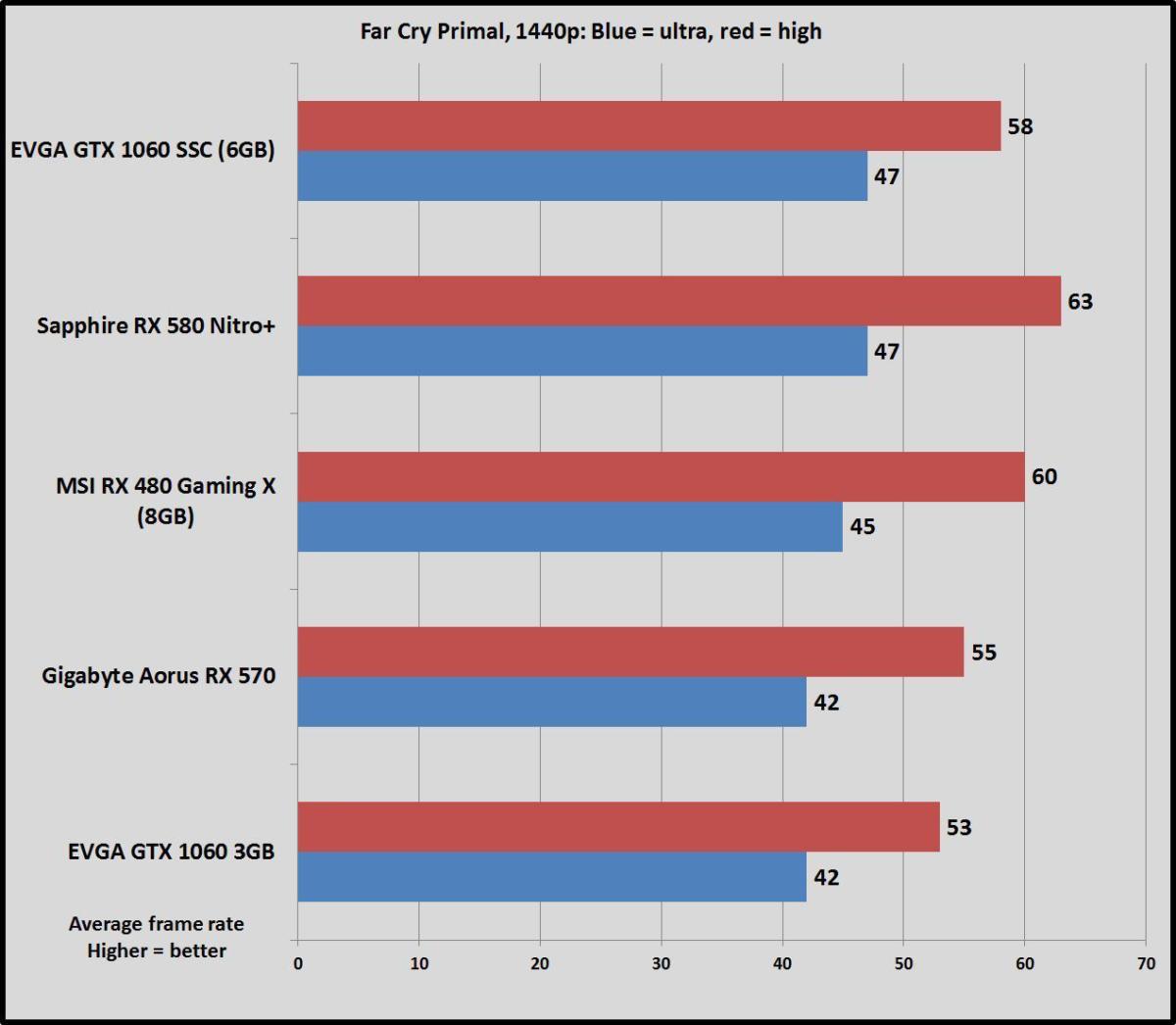 Brad Chacos/IDG
Brad Chacos/IDG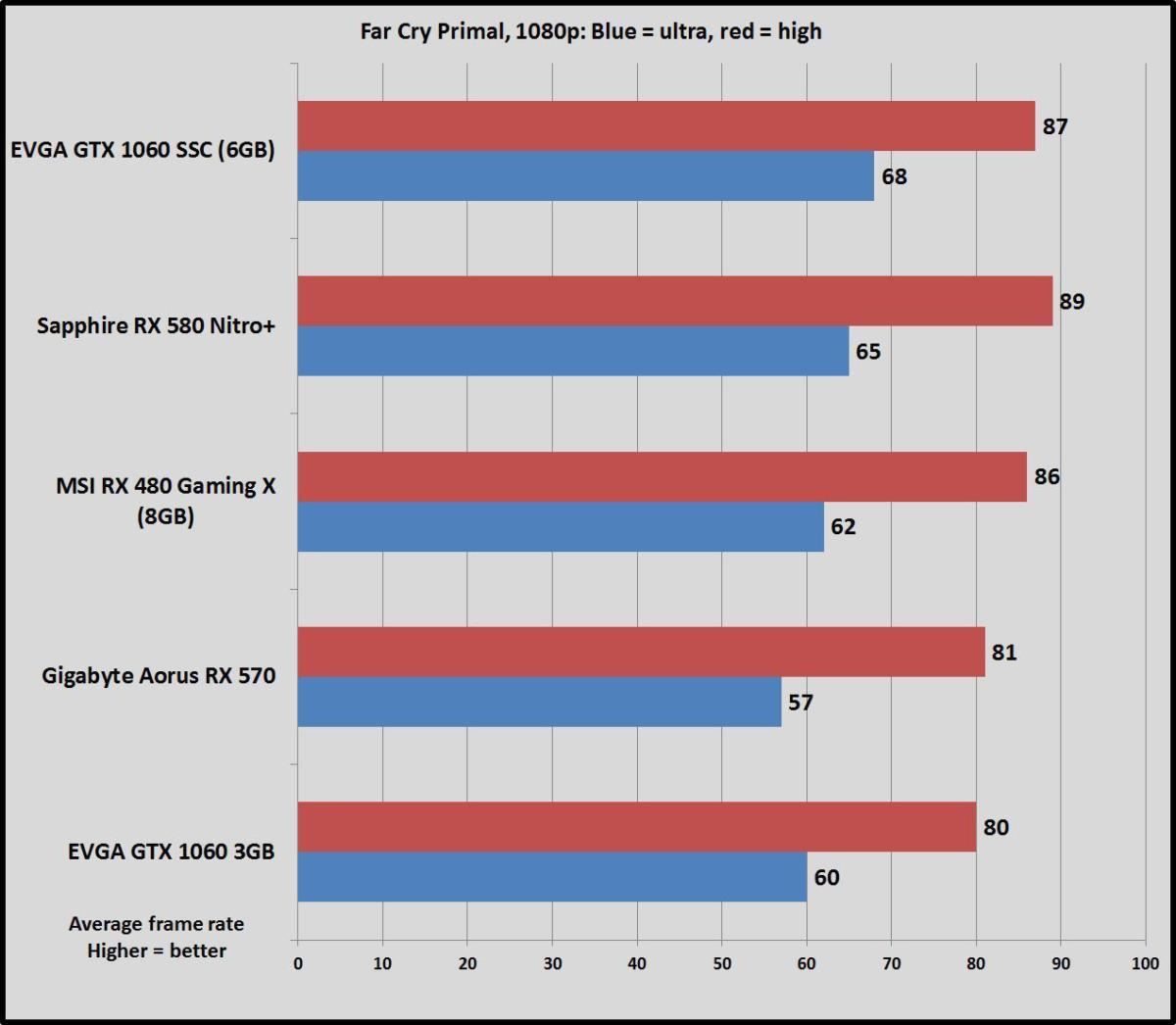 Brad Chacos/IDG
Brad Chacos/IDGOnce again, the RX 580 outpunches the RX 480 by such a slim margin that your eye could never actually see the difference. And once again, the EVGA 6GB GTX 1060 and Sapphire RX 580 Nitro+ trade blows depending on the graphics preset and resolution tested.
Next page: Ashes of the Singularity
Ashes of the Singularity
Ashes of the Singularity, running on Oxide’s custom Nitrous engine, was an early standard-bearer for DirectX 12, and many months later it’s still the premier game for seeing what next-gen graphics technologies have to offer. We test the game using the High graphics setting, as the wildly strenuous Crazy and Extreme presets aren’t reflective of real-world usage scenarios.
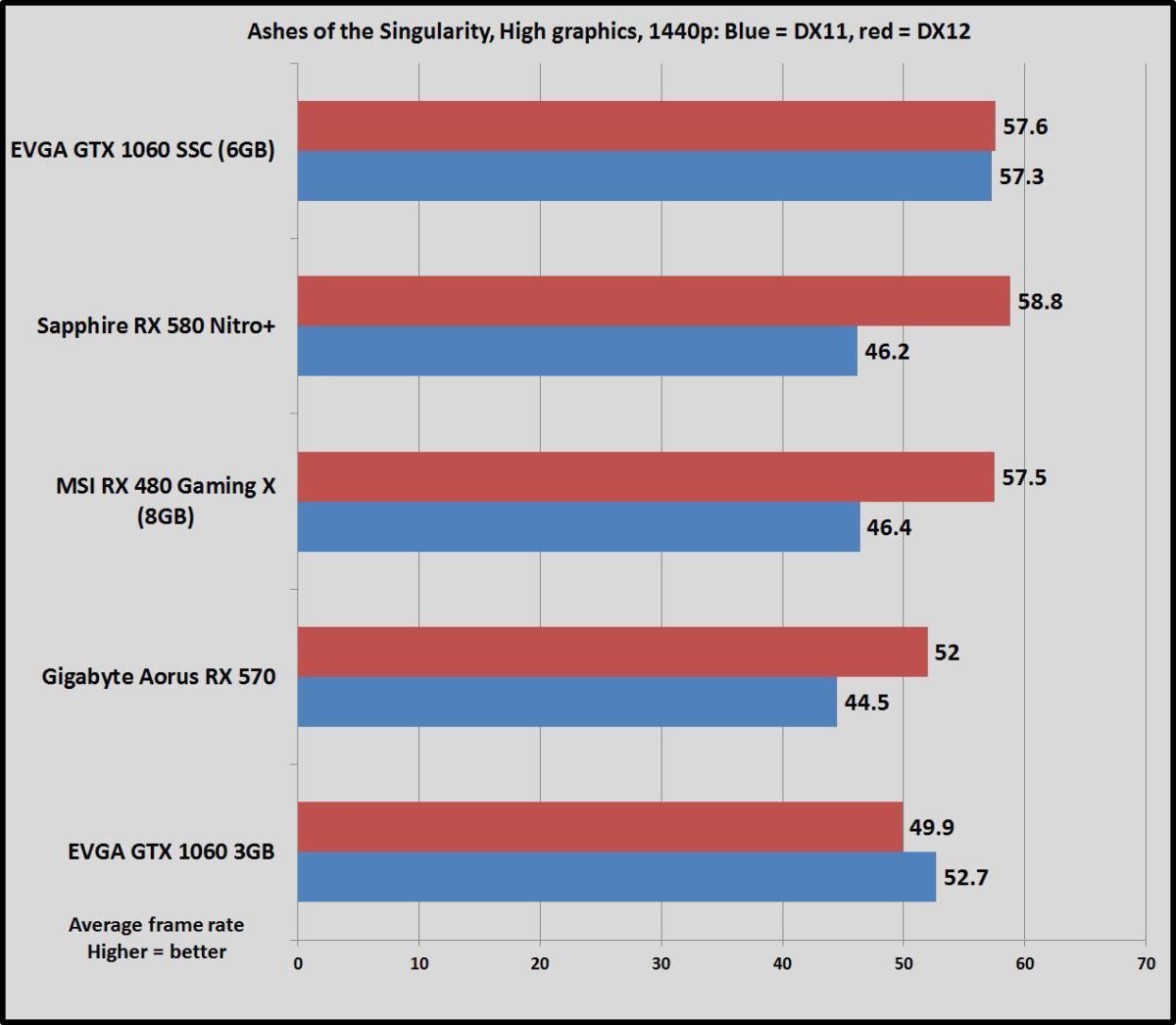 Brad Chacos/IDG
Brad Chacos/IDG Brad Chacos/IDG
Brad Chacos/IDGSurprise! It’s a draw yet again—if you’re on Windows 10. The Radeon card only ties Nvidia’s results if you enable DirectX 12, which isn’t possible if you’re on Windows 7 or 8.1. If you’re on an older operating system, GeForce is the clear winner here.
Next page: Synthetic benchmarks and more
Synthetics, VR, power, and heat
We also tested the Radeon RX 580 Nitro+ and its rivals using 3DMark’s highly respected DX11 Fire Strike and Fire Strike Ultra synthetic benchmarks, as well as 3DMark’s Time Spy benchmark, which tests DirectX 12 performance at 2560×1440 resolution.
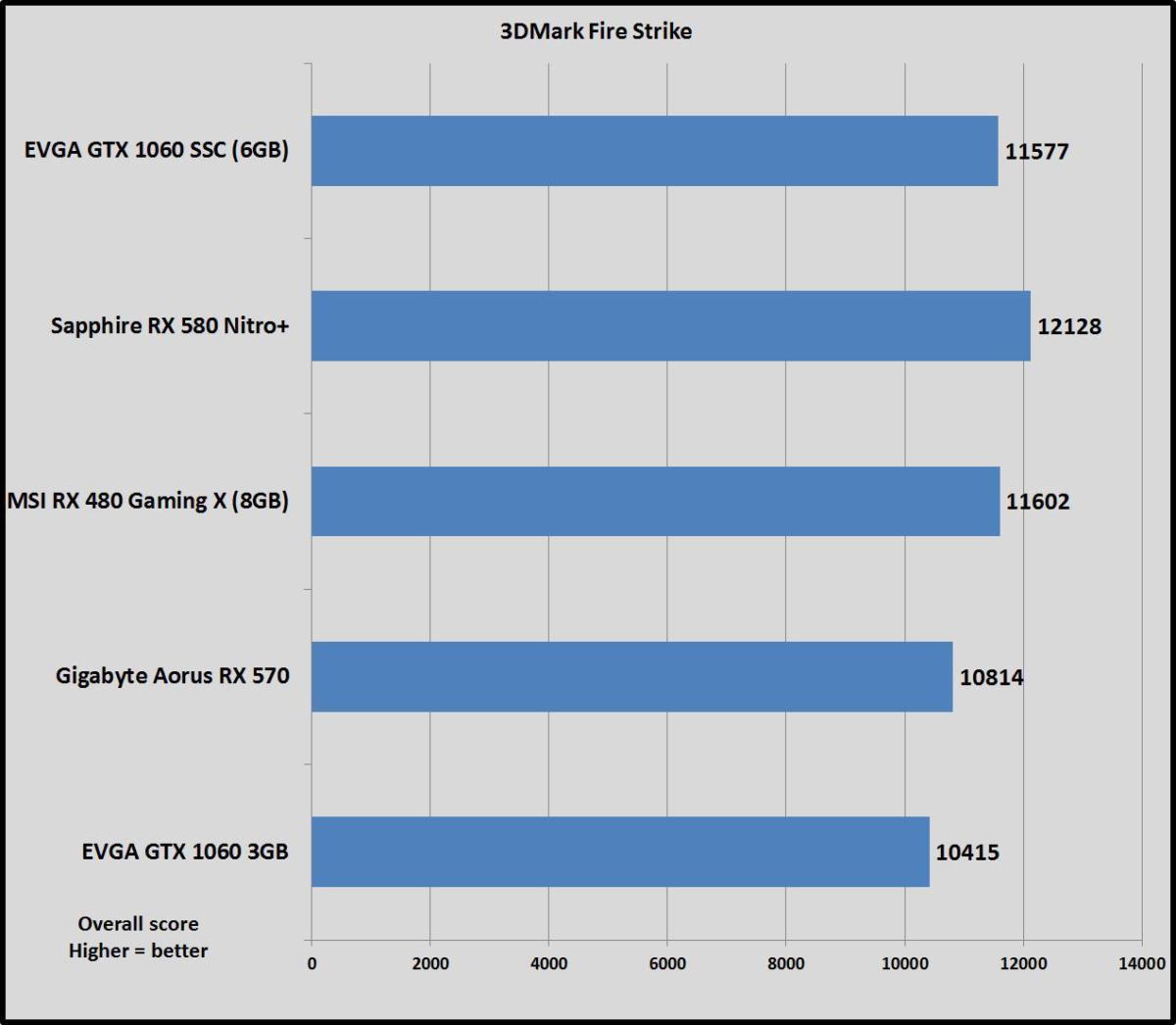 Brad Chacos/IDG
Brad Chacos/IDG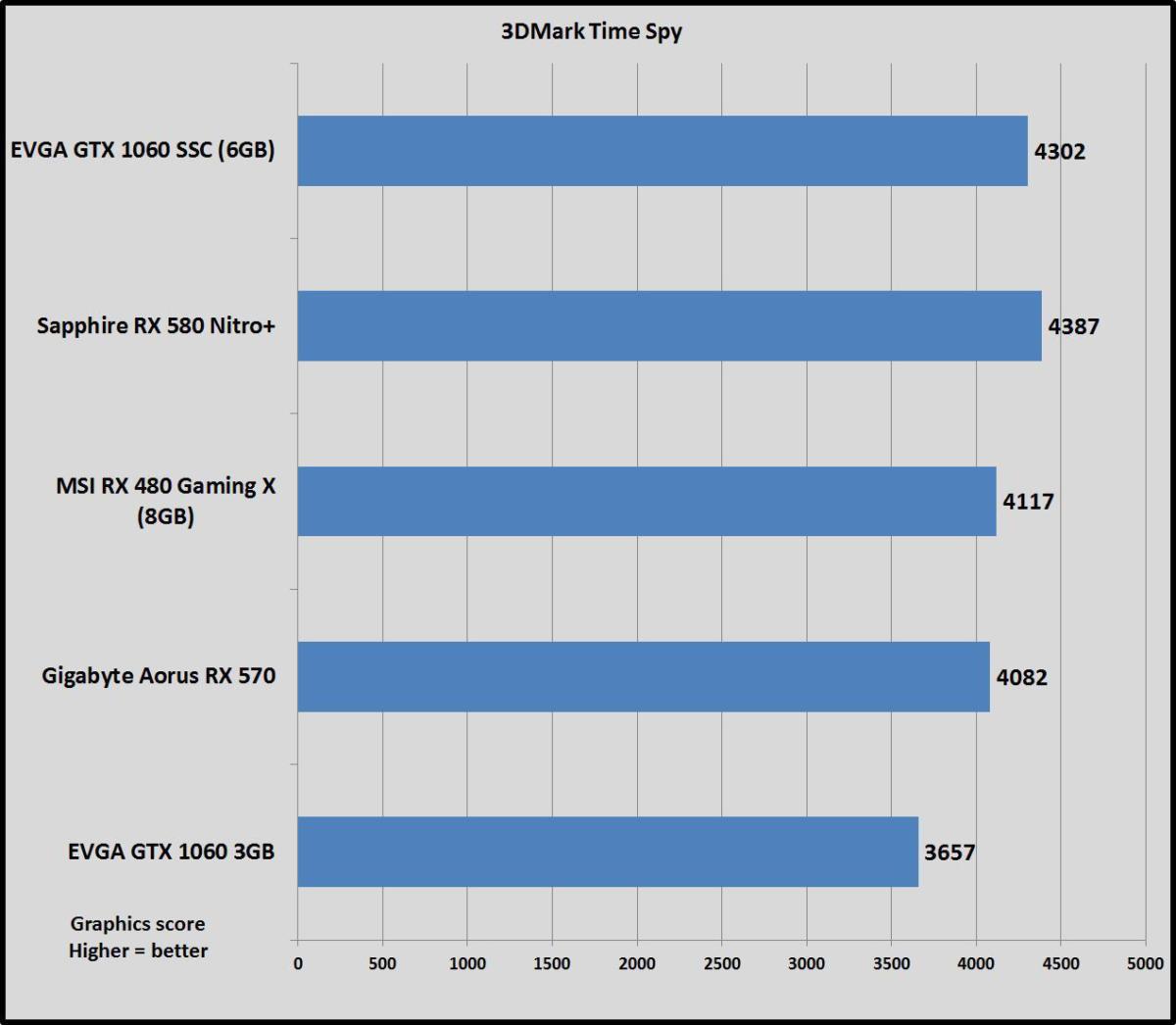 Brad Chacos/IDG
Brad Chacos/IDGEverything falls about where you’d expect based on prior performance results.
SteamVR
Valve’s SteamVR performance test considers all competitors ready for use with the HTC Vive, with the 6GB GeForce card head-and-shoulders above the rest. The Radeon RX 580 can still deliver solid VR at a solid price—though I’d be nervous about the 3GB GTX 1060’s 3GB memory buffer, no matter what Valve’s test says about its VR capabilities.
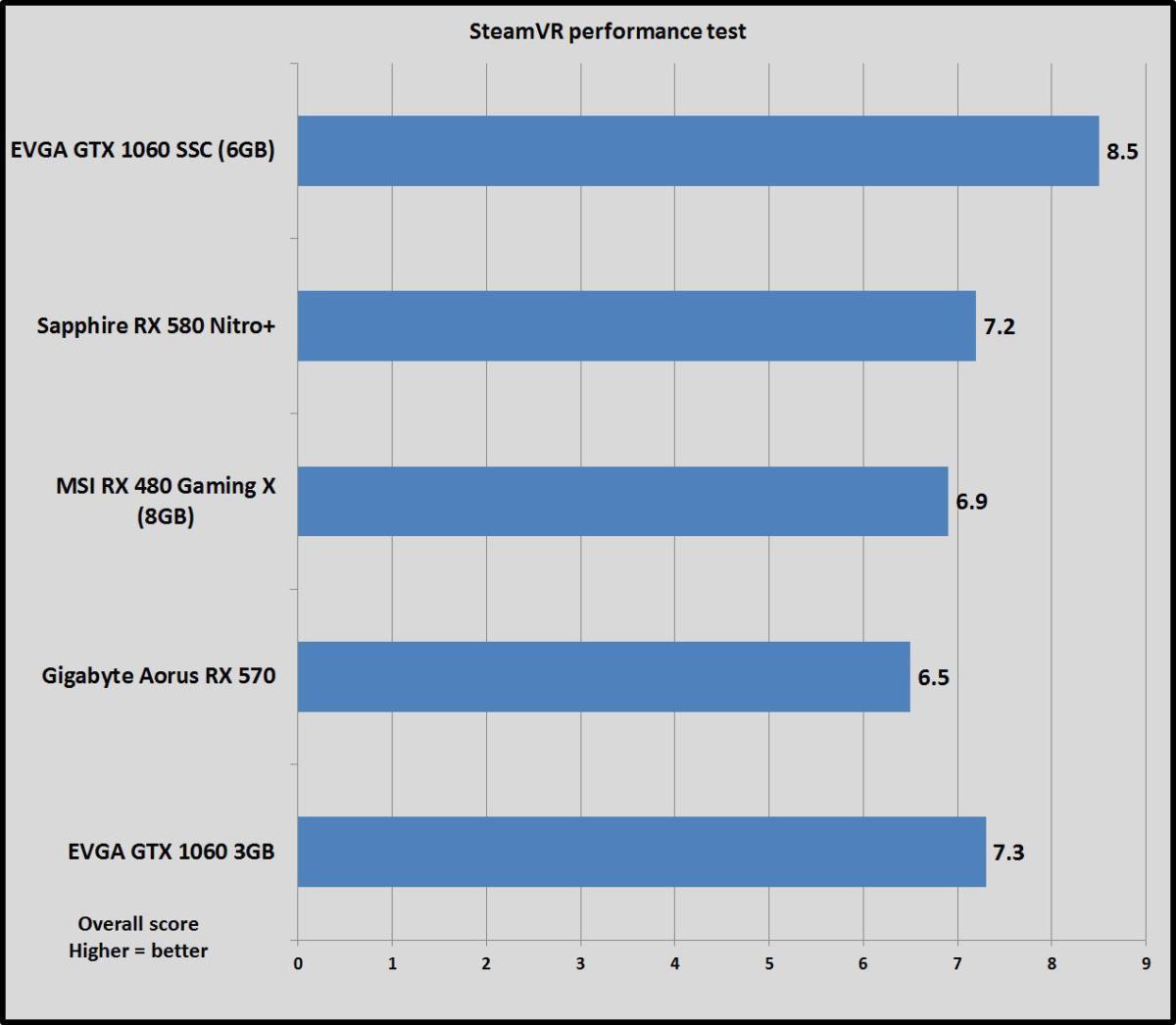 Brad Chacos/IDG
Brad Chacos/IDGThese cards should do just fine with the Oculus Rift as well, thanks in part to Oculus’ amazing Asynchronous Spacewarp technology.
Next page: Power and heat
Power
We test power under load by plugging the entire system into a Watts Up meter, running the intensive Division benchmark at 4K resolution, and noting the peak power draw. Idle power is measured after sitting on the Windows desktop for three minutes with no extra programs or processes running.
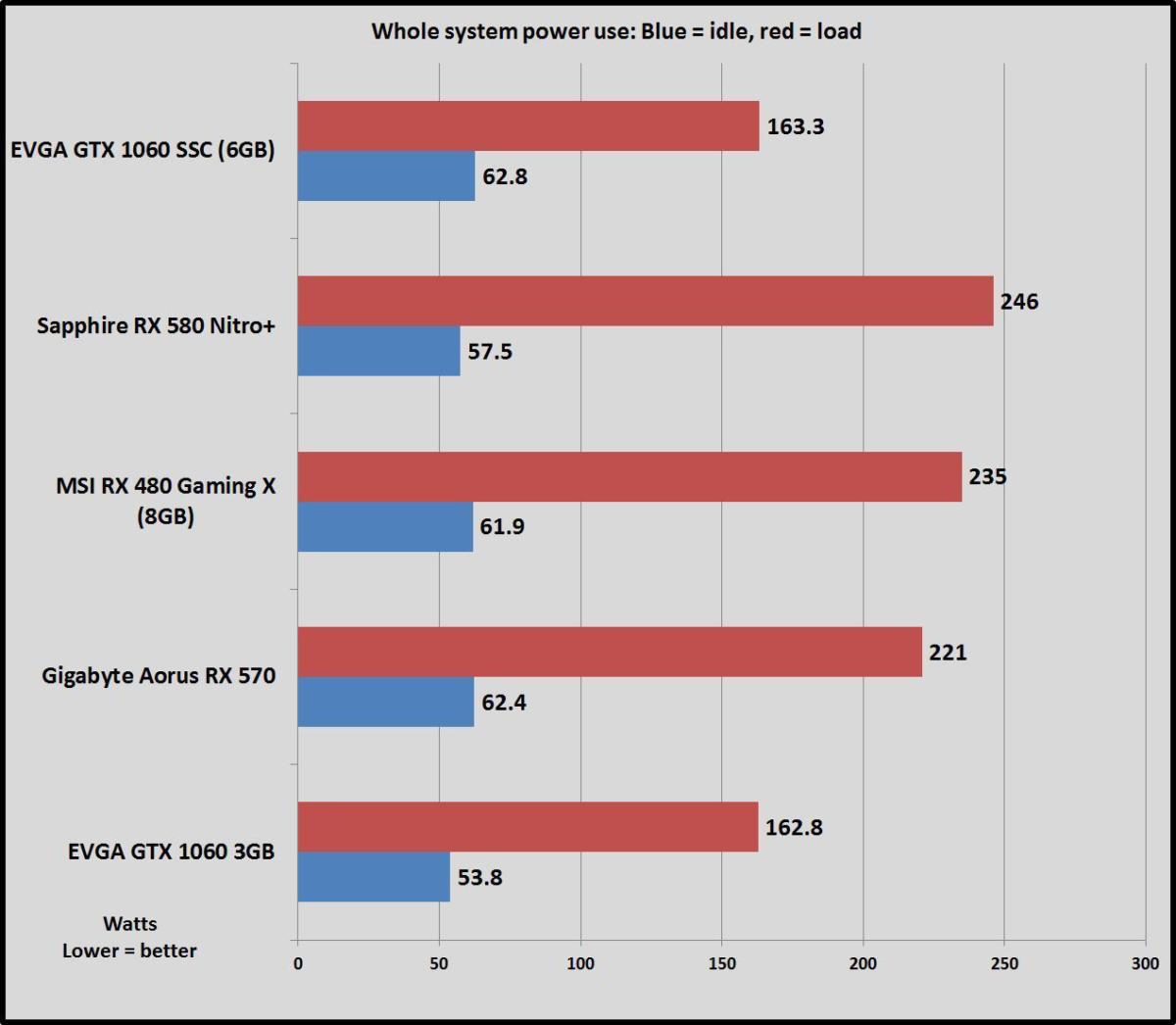 Brad Chacos/IDG
Brad Chacos/IDGNo surprises here. Nvidia’s Pascal GPU architecture is still vastly more power efficient than AMD’s Polaris, and that lead’s only extended now that the Radeon RX 500-series cranked up clock speeds. Both are a huge improvement over the power draw of yesteryear’s graphics cards.
The power optimizations AMD promised during idle usage are reflected here as well. While we didn’t measure it here, Radeon Chill can indeed bring down your power use and temperatures significantly—but only in the whitelisted games, and you have to manually enable it. (Which you should!)
Heat
We test heat during the same intensive Division benchmark at a strenuous 4K resolution, by running SpeedFan in the background and noting the maximum GPU temperature once the run is complete.
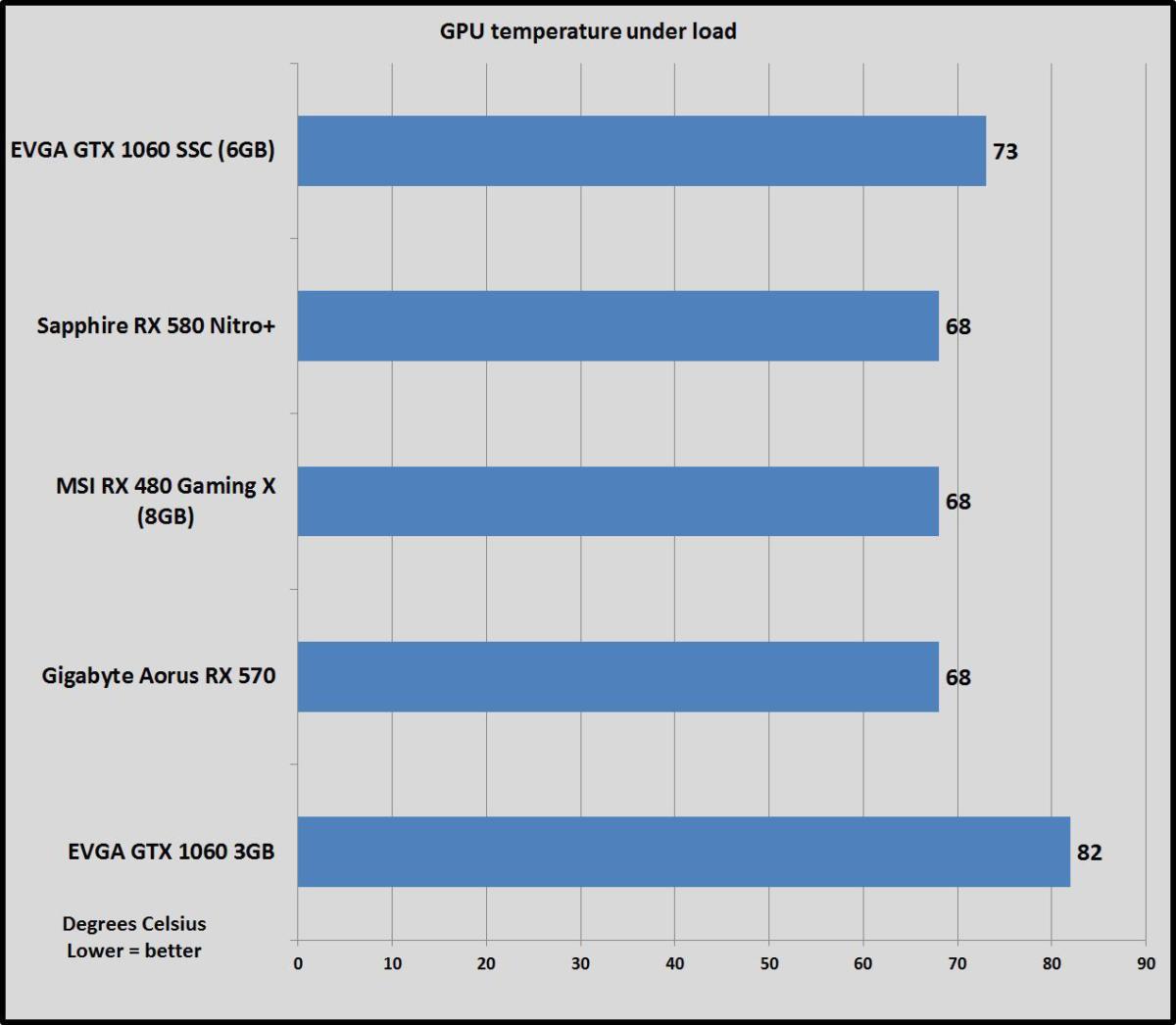 Brad Chacos/IDG
Brad Chacos/IDGHere’s proof that the custom cooling designs by graphics card makers matter. The 6GB GeForce GTX 1060 SSC sucks down much less power than the Radeon RX 580, but Sapphire’s Nitro+ keeps AMD’s GPU chillier under load. It runs sliiiightly louder than the EVGA card as a result, but still damned quiet, even while gaming—and again, Radeon Chill can work wonders here if you use it.
Next page: Bottom line
Bottom line
The Radeon RX 580 is almost a mirror image of its predecessor, so our buying advice remains the same. Modern graphics cards built using the 14nm or 16nm manufacturing process deliver huge performance increases over older models from the same price segment. If you’re using a Radeon R9 380 or GeForce GTX 960—or anything released before those—the Radeon RX 580 is a worthwhile upgrade.
The $200 4GB Radeon RX 480 is still the best mainstream graphics card you can buy today. The experiences it unlocks for that price are still remarkable: no-compromises 60fps-plus gaming at 1080p, darn satisfying 1440p gaming in many games, and even virtual reality. This review didn’t cover a 4GB RX 580, but since the new lineup hews so closely to RX 480 performance, I’m comfortable giving it my stamp of approval. If you’re gaming at 1080p buy this over any GeForce GTX 1060.
Mentioned in this article
Acer XF240H 24-inch 1920×1080 FreeSync display, 144Hz
 Price When Reviewed:$249.99
Price When Reviewed:$249.99
The $170 Radeon RX 570 also kicks butt at 1080p, 60fps gaming for even less money, albeit with 10 to 15 percent less performance, which makes it less future-proof. Pairing either the RX 570 or the RX 480 with an affordable FreeSync variable refresh monitor delivers a stellar gaming experience, and unlike Nvidia G-Sync monitors, FreeSync doesn’t skyrocket the cost of a display. FreeSync’s a major selling point for Radeon cards in this price range.
 Brad Chacos/IDG
Brad Chacos/IDGThe $230-plus 8GB Radeon RX 580 is a trickier proposition. It’s most tempting if you’re planning on 1440p gaming or you think the cheaper model’s 4GB buffer won’t hold up well over the amount of time you plan on keeping the graphics card. But its price point puts the 8GB RX 580 head-to-head against Nvidia’s 6GB GeForce GTX 1060 and they’re virtually equals in terms of sheer performance.
Both of the cards are great, and AMD and Nvidia have both been killing it with software and drivers recently. If you value the extra 2GB of memory and affordable FreeSync monitors, go for the Radeon card. The GeForce GTX 1060 offers much better power efficiency, Nvidia’s wonderful Ansel tech, and typically sky-high overclocking potential. It’s a push.
If you do decide to go with an 8GB RX 580, Sapphire’s customized $250 RX 580 Nitro+ should be on your shortlist for consideration. It’s gorgeous, cool, and extremely quiet without being gigantic, and the extra power connection should come in handy if you plan on overclocking. The $250 price point is comparable to other highly customized 8GB RX 580s being released by other graphics card vendors, and Sapphire’s optimizations are stunning.
 Brad Chacos/IDG
Brad Chacos/IDGBut my advice is not to buy the Radeon RX 580 if you’re reading this anytime near the card’s launch. As far as refreshes go, the Radeon RX 500-series is incredibly disappointing: Memory speeds and capacity weren’t touched whatsoever, unlike with AMD’s R300-series rebrands, and the slightly higher clock speeds only result in a performance uptick of a few frames per second. Leftover Radeon RX 480s can be found at deep price discounts as I’m writing this. On Newegg, several custom 4GB models can be had for $180, and Gigabyte’s RX 480 Windforce is just $170 after rebate. Heck, several 8GB RX 480s are hovering around $200—including Sapphire’s own RX 480 Nitro+.
Go with the older RX 480 cards if they’re available and you want to save some cash. You won’t notice the performance difference. But at its core, the Radeon RX 580 is still the same Polaris GPU we’re used to from before, so once the cheap Radeon RX 480s dry up, the 4GB version of this newer refresh is still the best $200 graphics card you can buy.
Best Prices Today: Radeon RX 580 Nitro+
RetailerPrice



